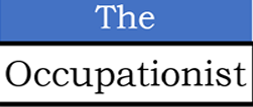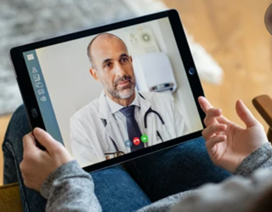Business owners and employees who did not have any OH support to guide them while working from home will be surprised to know about the advantages of having one. Timely and precise advice by OH specialist resulted in less confusion to face the new challenges and instilled confidence to sail through the pandemic.
When lockdown was initially announced in India, few must have thought that it will extend for months. Most were prepared to return to workplace after 3-4 weeks. However, working from home (WFH) became a norm. All enjoyed WFH for a while, however, for most it started becoming a nightmare.
Employers and employees quickly learnt the two words – ergonomics and mental health, but didn’t know where to find the right resource, unless they had OH support. Soon, there was an expectation that employers should support the mental and physical health of employees, in the newfound workplace – home.
Sooner than expected, WFH did lead to problems of a new kind. Problems that people had never imagined, problems that could be classified as being work-related. For example, most employees did not have proper place to work from home (the average Indian home was never designed to work from home for extended hours), as a result there were ergonomic issues.
A lot of other issues started cropping up and started to cause mental anguish, viz, too many virtual calls extending for long hours, absence of domestic help at home, having to do every household activity, taking care of small children and the elderly, to consult doctors virtually etc. Even if working from home was not hampering productivity initially, it was affecting mental, physical, and social health of the employees, only to worsen with time.
Employees in workplaces having the support of OH specialist had the advantage of managing work-related employee concerns more efficiently. They have been briefly summarized below:
- Ergonomics – lack of worktable in the house; sometimes even lack of space to keep a worktable. Add to this the other spouse also requiring a worktable. There were children requiring table and space to attend the virtual school. Lack of worktable and/or space led to finding place just anywhere in the house and work in awkward postures for long periods. Aches and pains started cropping up. Even if some organizations gave a worktable and chairs, in many instances, there was no place in the house to keep it, and it worked well for employees if the worktable and chairs provided were adjustable. Few employers knew that there is a software available which when installed in the computer would prompt like an ergonomist the steps to be taken to prevent computer-related illnesses. A bad or incomplete ergonomics continues to hurt; I call it ergouchnomics as the ouch remains even after the ergonomic interventions.
- Virtual calls: Very few companies realized that too many virtual calls were happening. In fact, virtual calls increased during the WFH period, initially less in time and frequency but eventually kept on increasing. Virtual calls started happening after usual work hours. All this led to anxiety anguish as other household works that would be done by a domestic help had to be done by oneself. Mature managements realized this and streamlined virtual calls thus giving employees time/space they wanted.
- Mental health: New ways of working, lack of proper facilities at home to facilitate working, taking care of kids and parents, cooking and cleaning the house in absence of domestic help, too many back-to-back virtual calls etc. were responsible for stress, especially in women employees. Line managers were advised to understand these and the least they could do was to provide ergonomic workstations those who needed and reduce the length and number of virtual calls. Supporting staff better and more than before does involve additional time and costs but is a good investment as a research from Deloitte, published in 2020 estimates that for every £1 spent by employers on mental health interventions, the gain is £5 in business value.
- Social health: It is about one’s ability to establish satisfying interpersonal relationships with others and to adapt comfortably to different social situations and act appropriately. All employees may not be socially adept. During pandemic the introverts were happier as they got their space and time while the extroverts had a tough time as they were confined to borders of their home. Both the introverts and the extroverts will have anxiety when the offices reopen. The OH physician in such cases assesses the anxiety level of employees and advises the management in the best interest of the both.
- Lifestyle diseases: Assessment of how necessary the annual health check is to manage lifestyle diseases given the pandemic situation was done by the OH physician. For example, if the employee was due for an ultrasound for an old suspicious lesion in the liver, then it was done in a health centre after taking utmost precaution. However, employees were advised to refrain from routine annual health checks and do blood checks as necessary (example, blood sugars if diabetic, liver/kidney function test if earlier abnormal etc.) either at home or in a lab taking all Covid precautions.
- Virtual medical consultations: Initially when it was difficult to get virtual appointment with a doctor, the OH physician facilitated and chose the easy-to-connect and the right portal for the employees.
- Liaison with hospitals/doctors: In case of admission for Covid or non-Covid employees, the OH physician facilitated the process of admission as necessary.
- Return to work (RTW): After a Covid or a non-Covid illness it is only after an assessment by the OH physician a proper rehab is planned for the timely RTW of the employee even if working from home.
- Long Covid: Prolonged illness experienced by many patients after Covid is termed as Long Covid. Only an OH physician could simplify the meaning of Long Covid and advise the management that some employees may take longer than other after a Covid infection. Long Covid is real and impacts ability to work and that has implications for employers.
- Simplifying government regulations: There were occasions when the employees and employers found it difficult to understand the government regulations as and when they were released. The OH physician simplified it so that appropriate actions could be taken to comply with the government regulations.
- Reopening: Workplaces should be reopened in such a way that they should not close due to increase in Covid infections. Protocols to prevent infections after reopening workplace were developed by the OH specialist along with senior management. They were then shared with the employees so that they felt confident to re-enter the workplace.
- Vaccinations: Any confusion over the vaccine was simplified and presented to the employees in townhalls. As a result, employees understood the significance of vaccination and were encouraged to vaccinate.
In case of any support, reader may contact



